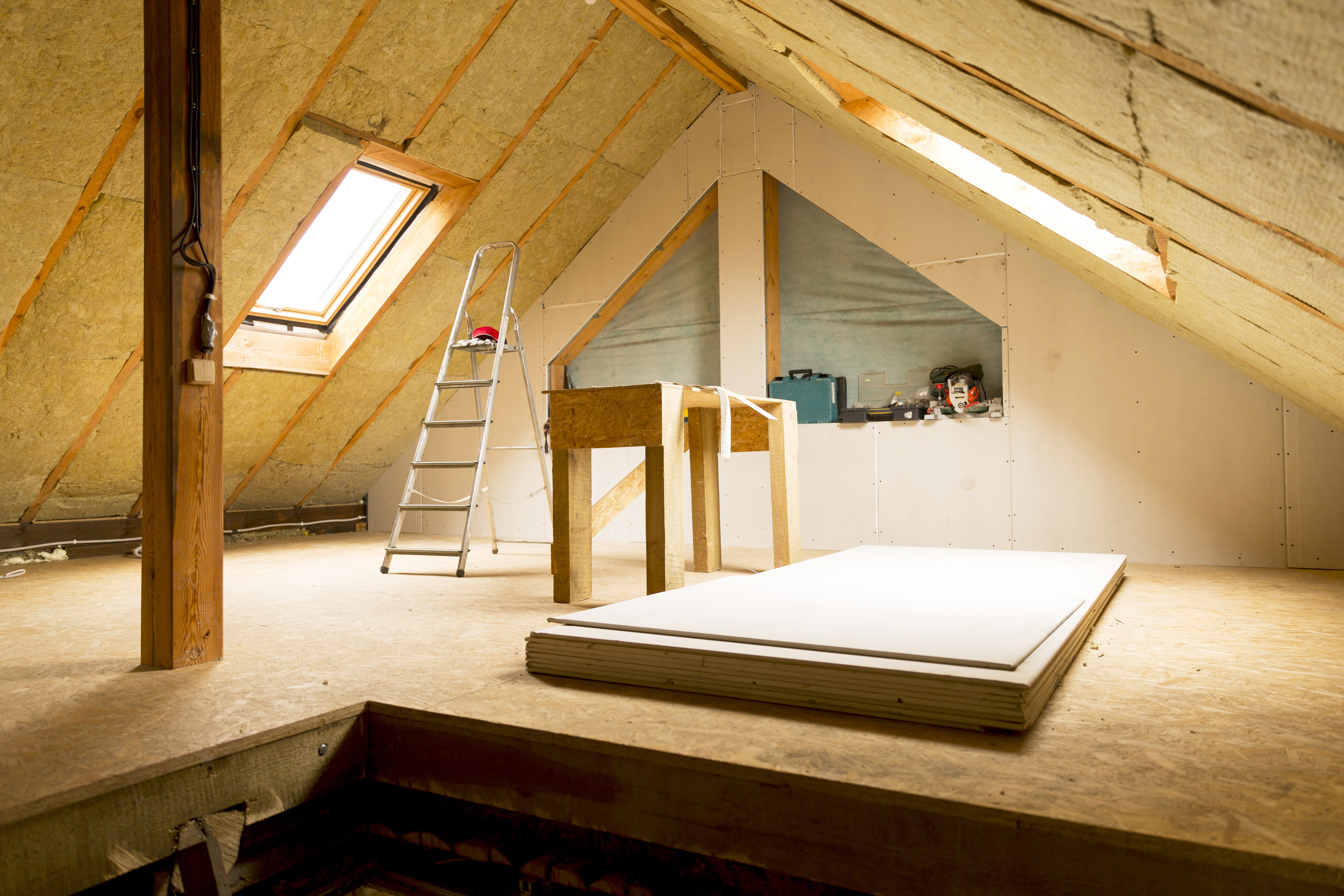
Over the past 40 years, BSER&T has been reporting the latest on indoor environmental quality in buildings – and, more specifically, on the thermal comfort of occupants.
Research in this area has evolved greatly in recent years. In particular, the assessment of thermal comfort has moved from rules of thumb to a deterministic approach – for example, a standard temperature threshold – to a more dynamic approach, such as the adaptive comfort method.

Designers can now assess thermal comfort for future climate projections, as well as for observed weather events. Although our understanding of occupant comfort and health has increased greatly, climate change – and the resulting higher temperatures – mean we are having to evolve designs continuously, to ensure buildings don’t overheat. The effects of global warming are being exacerbated by the policy requirement for higher levels of insulation and airtightness, and the urban heat island (UHI) effect.
In normally temperate climates, homes typically rely on passive design measures to tackle hot-weather events, rather than the mechanical means of ventilation and cooling employed in commercial buildings. Furthermore, occupancy in the domestic sector is much more unpredictable than in the non-domestic sector, with families using their homes in a variety of ways. These factors make homes more prone to overheating, and their design presents a greater challenge to professionals to make them resilient to hot-weather events.
It is the most vulnerable occupants – the elderly, the young and those with pre-existing health problems – who will suffer most as a result of higher internal temperatures. They are more likely to be confined to their homes and less able to make their environment more comfortable.
Mitigation options for domestic retrofit
Previous research has established that shading and ventilation can reduce the risk of overheating in homes considerably. This is reiterated by De Grussa et al,1 who monitored a real-life retrofitted apartment building in London to investigate the effectiveness of passive measures in mitigating high indoor temperatures.
The measures tested included different internal and external shading options combined with a night-time natural ventilation strategy. Results showed that external shading offers the most effective option in reducing solar gains and, therefore, overheating risk. Furthermore, external shading – such as shutters – can offer daytime and night-time secure ventilation. Despite the academic consensus on the effectiveness of external shading, the authors highlight that current construction practices in the UK do not allow for such a measure to be introduced as a retrofit option as, in most cases, windows open outwards.
The authors also highlight the importance of external factors, such as noise, when considering night-time ventilation – especially in an urban environment – and the potential reduction of daylight availability when external shading is used. The paper emphasises the significance of looking at glazing, shading, ventilation, daylighting and noise exposure in a holistic way, at the building design stage, to ensure appropriate design of an effective façade-management strategy to tackle overheating risk.

Lofts are vulnerable to overheating
Taylor et al2 focused their research on a loft conversion – a popular retrofitting trend, driven by the high cost of housing per square metre and demand for extra living space. Typical loft characteristics – top floor (directly under the roof) and usually of lightweight construction – make them vulnerable to overheating. Results showed increased overheating risk of lofts when appropriate mitigation options are not considered, and climate change projections indicate the risk will increase in future.
De Grussa had found that external shading with night-time ventilation was the most effective passive mitigation option. Looking at the cost of passive mitigation measures, strategies with internal shading were the most cost-effective retrofit options. The analysis also highlighted that passive measures, although effective under current climate, are not enough to eliminate the risk in the future, with active cooling likely to be the only solution to future overheating.
Both papers highlight how occupant behaviour can reduce overheating risk by appropriate operation of windows and shading devices. Those with limited mobility are more vulnerable because they have limited ability to change their circumstances, the authors warn.
Assessing overheating of the elderly
Hughes et al3 and Salem et al4 concentrated their research on the elderly. The Hughes paper looked at thermal comfort of the elderly in their homes, while the second investigated the impact of a near zero-energy building (NZEB) standard retrofit on the thermal comfort of the elderly in a retirement home, now and in the future.
Hughes et al compared field studies with current design standards to assess the comfort perception of the elderly occupants. As most current industry standards – mainly based on the adaptive model as per BS15251 – are founded on field studies involving healthy individuals at work, the study identified a discrepancy between the comfort perception of the elderly at home compared with the results when applying the thermal design standards. Further research is required to consider how current design practices and standards need to be adapted for use in the homes of vulnerable occupants.
Salem et al investigated the impact of a changing climate on the risk of overheating and energy performance for a UK retirement village. The application of NZEB retrofit measures for energy efficiency increased the risk of overheating of the village, and none of the mitigation option combinations seems to have eliminated the risk – which was much worse when the analysis was done using future climate projections.
Although the energy efficiency agenda is important, the authors highlight that ignoring its effect on overheating could compromise it, as increased use of mechanical cooling will also impact on energy use.
Vulnerability of existing housing stock
Petrou et al5 statistically analysed the indoor temperatures and occupant and dwelling-type characteristics of a large housing dataset, to try to create correlations between the factors that increase (or decrease) the risk of overheating. One particularly notable correlation was between the size of a property and the household vulnerability, with the latter increasing when the size is reduced.
Results also showed that pre-1900 dwellings were cooler overall than post-1900 ones, and that the presence of children was associated with higher bedroom temperatures, as was the presence of vulnerable occupants. Indoor temperatures were also highest for dwellings that rated highly in the UK compliance test for homes at design stage, which reinforces the need for the regulatory framework to address summer as well as winter performance.
New-build practices
One of the current trends in energy efficiency design is the Passivhaus standard, which promotes highly insulated buildings with good standards of airtightness. This type of construction is perceived to have a higher risk of overheating than more ‘draughty’ homes.
Mitchell et al6 interrogated data from 82 homes built following Passivhaus principles. The analysis showed that the majority of Passivhaus homes passed the overheating design criteria, but a high number of bedrooms experienced high temperatures during the night. The authors propose a more in-depth, room-by-room approach to design where the whole-year performance of the building is assessed.
Modelling v monitoring
The paper by Roberts et al7 investigates the consistency of the design tools used to assess overheating and compares them with real-life monitored data. The results showed that, during warm weather, the models consistently predicted higher peak temperatures and larger diurnal swings than the measured data.
When looking at the intermodel comparison, both software tools that were used presented the same trends, but there was considerable discrepancy between actual overheating hours predicted. Considering that the modelling was coordinated to eliminate any assumptions specific to the modeller, the results question the appropriateness of models – primarily built for energy assessments – to give designers a reliable assessment of overheating. The analysis also highlights the importance of intelligent interrogation of results to assess by how much it is acceptable to fail the design thresholds. The paper says thresholds could be used as prompts for further investigation rather than absolutes.
As global temperatures increase, human vulnerability to summer overheating will increase and, consequently, understanding the internal environment of those most at risk is becoming more significant. Very little is known about appropriate threshold temperatures or acceptable durations of overheating in vulnerable populations, such as the elderly. Design standards need to be further developed to reflect the thermal comfort thresholds of vulnerable populations.
A clear message from all the papers is that the UK regulatory framework and construction practices need to reflect year-round energy and indoor environmental performance of homes and buildings. The Environmental Audit Committee’s report on heatwaves, released on the hottest day of summer 2018, put more pressure on industry and policy-makers to address overheating risk in a more holistic way.
About the author
Anastasia Mylona is CIBSE head of research AMylona@cibse.org
All of these papers may be accessed in the July 2019 issue of BSER&T
CIBSE members can access BSER&T for free at any time
References:
1 A London residential retrofit case study: evaluating passive mitigation methods of reducing risk to overheating through the use of solar shading combined with night-time ventilation – Z De Grussa, D Andrews, G Lowry, EJ Newton, K Yiakoumetti, A Chalk and D Bush
2 Indoor overheating and mitigation of converted lofts in London, UK – X Li, J Taylor and P Symonds
3 Summer thermal comfort and overheating in the elderly, C Hughes and S Natarajan
4 Investigating the impacts of a changing climate on the risk of overheating and energy performance for a UK retirement village adapted to the nZEB standards – R Salem, A Bahadori-Jahromi and A Mylona
5 The summer indoor temperatures of the English housing stock: exploring the influence of dwelling and household characteristics – G Petrou, P Symonds, A Mavrogianni, A Mylona and M Davies
6 Overheating risks in Passivhaus dwellings – R Mitchell and S Natarajan
7 Predictions of summertime overheating: comparison of dynamic thermal models and measurements in synthetically occupied test houses – B M Roberts, D Allinson, S Diamond, B Abel, C D Bhaumik, N Khatami and K J Lomas
